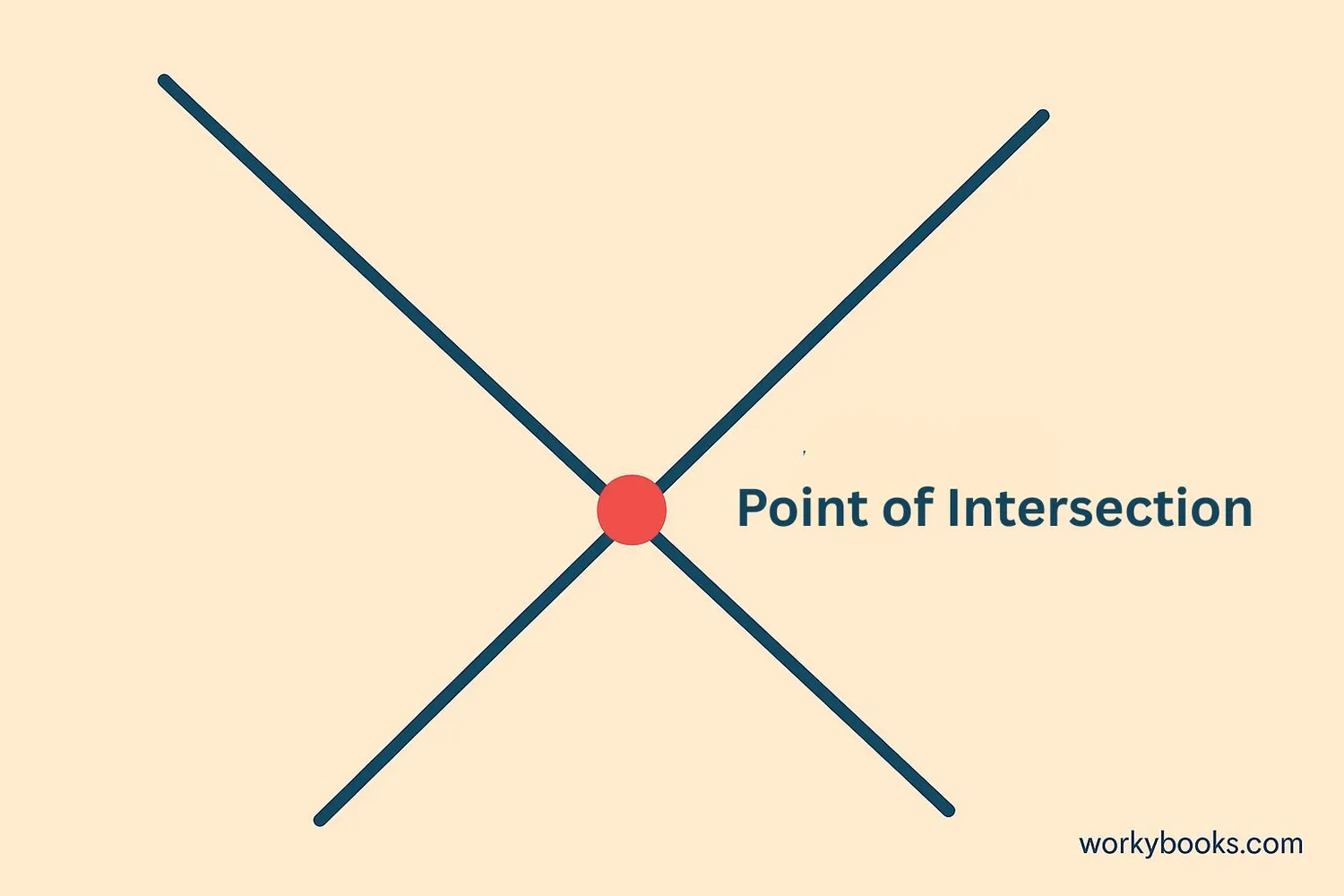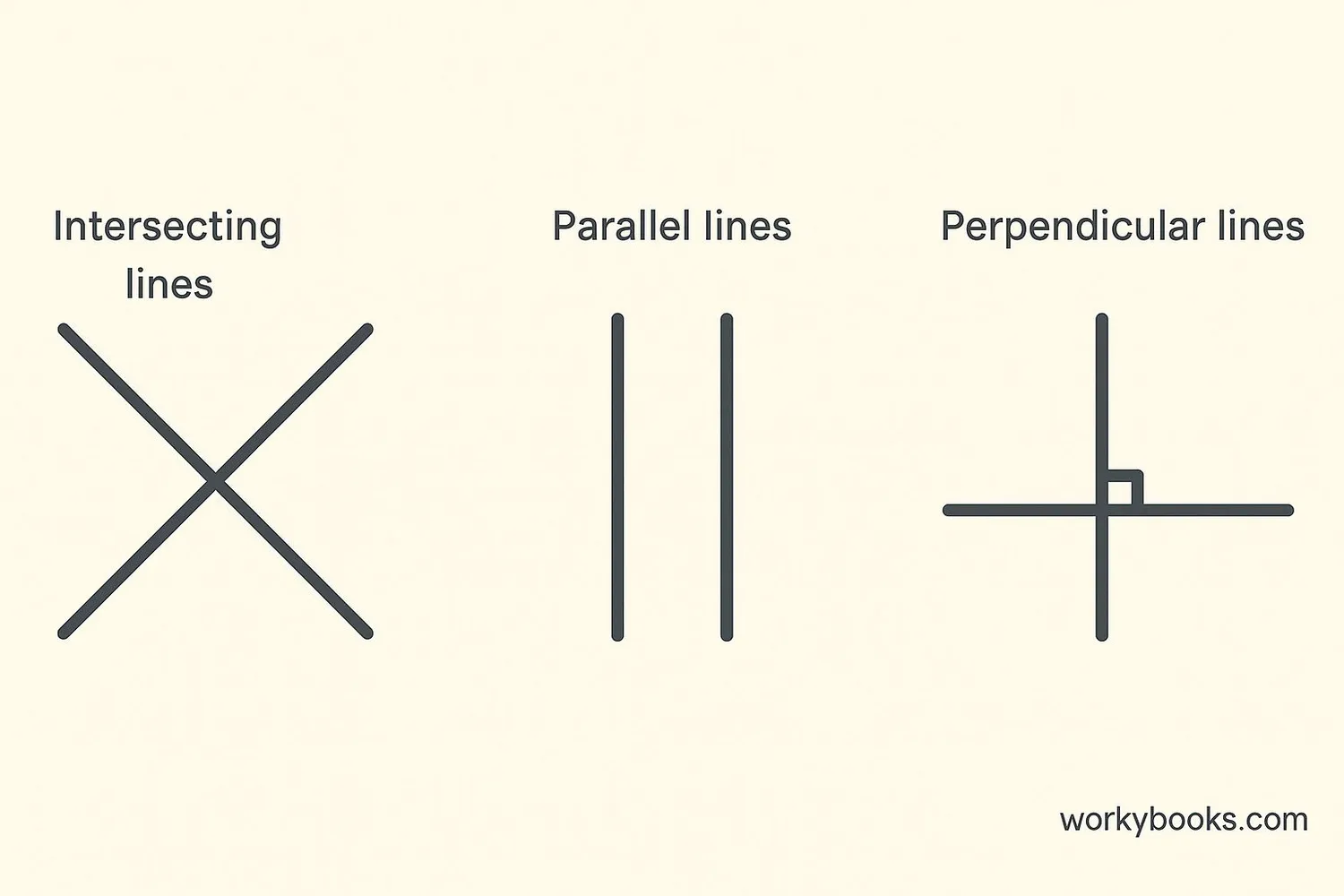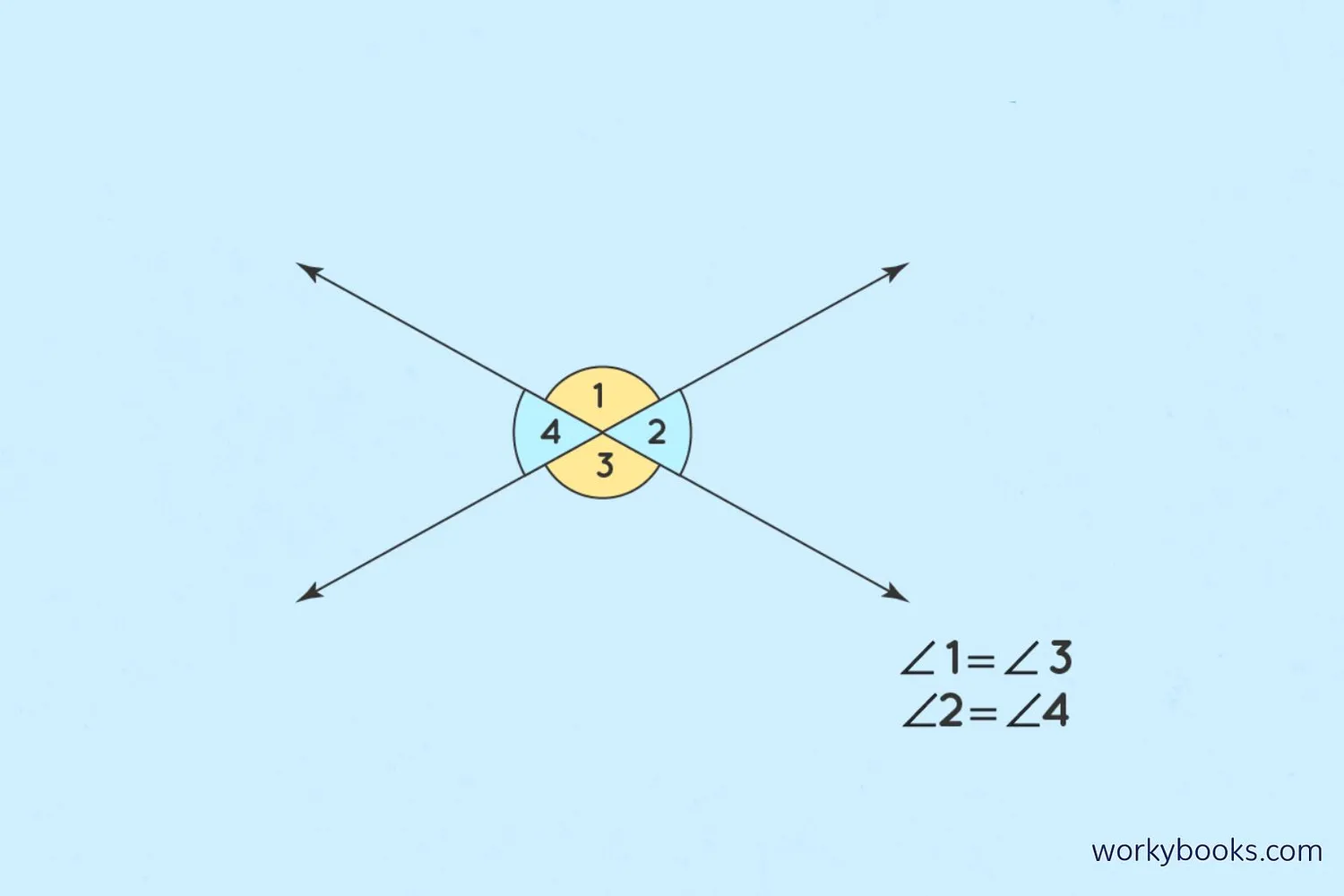Intersecting Lines - Definition, Examples, Quiz, FAQ, Trivia
Learn about lines that cross each other with simple explanations, visual examples, and practice activities
What are Intersecting Lines?

Intersecting lines are lines that cross each other at exactly one point. This point is called the point of intersection.
Think of two roads crossing at an intersection - that's exactly how intersecting lines work in geometry! When lines intersect, they form angles at the point where they cross.
All intersecting lines share these properties:
- They cross at exactly one point
- They form angles at the intersection point
- They are always in the same plane (flat surface)
Key Concept
Intersecting lines always cross at exactly one point. This point is called the point of intersection.
Types of Lines

There are different types of lines in geometry. Let's look at how they relate to intersecting lines:
Intersecting Lines
Lines that cross at one point. They can cross at any angle except 0° (which would be parallel) or 180° (which would be the same line).
Parallel Lines
Lines that never meet. They stay the same distance apart forever. Parallel lines do not intersect.
Perpendicular Lines
Special intersecting lines that cross at exactly 90° angles. They form perfect "L" shapes at their intersection point.
Concurrent Lines
Three or more lines that intersect at the same single point. Like spokes on a bicycle wheel meeting at the center.
Remember
All perpendicular lines are intersecting lines, but not all intersecting lines are perpendicular.
Angles at Intersection

When two lines intersect, they form four angles. These angles have special relationships:
Vertically opposite angles are equal
Vertically Opposite Angles: When two lines intersect, the angles opposite each other are equal. These are called vertically opposite angles.
Adjacent Angles: Angles that are next to each other and share a common side. Adjacent angles add up to 180° when they form a straight line.
Linear Pair of Angles: Two adjacent angles that form a straight line (180°). Their measures always add up to 180°.
Angle Fact
The sum of all angles around a point is always 360°. When two lines intersect, they form four angles that together make a full circle.
Real-World Examples

Intersecting lines are all around us! Here are some common examples:
1. Road Intersections: Where two streets cross each other
2. Scissors: The blades cross at a pivot point
3. Window Panes: Where the horizontal and vertical bars meet
4. Plus Sign (+): The simplest example of perpendicular intersecting lines
5. Railroad Crossings: Where the road and railroad tracks cross
6. Letter "X": Two diagonal lines crossing at the center
Next time you look around, see how many intersecting lines you can spot!
Try This
Look at the corners of this page. Do you see intersecting lines forming right angles?
Intersecting Lines Quiz
Test your knowledge with this 5-question quiz. Choose the correct answer for each question.
Frequently Asked Questions
Here are answers to common questions about intersecting lines:
Geometry Trivia
Discover interesting facts about lines and geometry:
Ancient Geometry
The concept of intersecting lines dates back to ancient Egypt around 3000 BC. Egyptians used intersecting lines in their pyramid designs and land surveying techniques.
In Nature
Intersecting lines appear in nature too! Spider webs are perfect examples of intersecting lines forming patterns. The points where the strands meet are points of intersection.
In Games
Many board games use intersecting lines. Chess boards have intersecting horizontal and vertical lines forming squares. The game of Tic-Tac-Toe is played on intersecting lines!
Tallest Structure
The Burj Khalifa in Dubai uses intersecting lines in its design. The building has a Y-shaped floor plan with three sections intersecting at the center, providing great stability.





